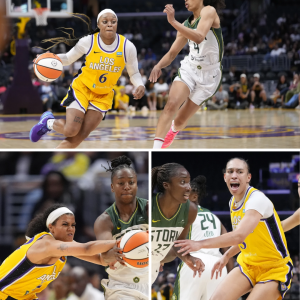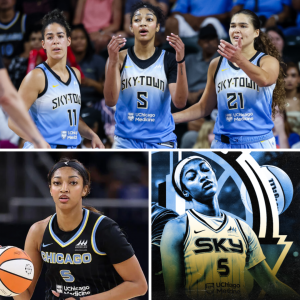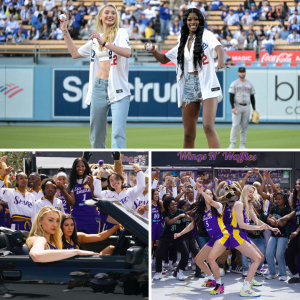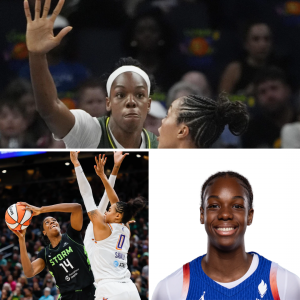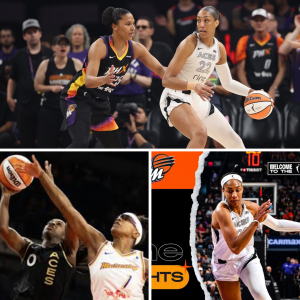A first championship. A first-round exit.
The juxtaposition of the endings of the New York Liberty’s 2024 and 2025 WNBA seasons frame the reactions to the franchise’s decision not to renew the contract of head coach Sandy Brondello. On one hand, the coach who captained the organization to its long-sought goal seems deserving of space and grace. On the other, severely underachieving expectations, despite a fair dose of adversity, should be cause for change.
General manager Johnathan Kolb presented the Brondello decision as “rooted in being proactive” rather than reactive, employing tech-speak approved terms like “evolution” and “innovation” to cast his choice as confident and clear-minded, and thus dissuade any second-guessing of how his team-building decisions—adding a big piece to the roster in Emma Meeseeman at midseason, filling out the bench with older one-way players, cutting ties with younger players, leaving Kayla Thornton unprotected in last year’s Golden State expansion draft, not replacing the physical brand of ball that Thornton and the injured Betnijah Laney-Hamilton brought in 2024—could have contributed to the team’s shortcomings.
Kolb’s emphasis on proactivity also contrasted with his insistence that Breanna Stewart, who ardently defended Brondello in the postgame presser after the Liberty were eliminated from the playoffs, Sabrina Ionescu and Jonquel Jones would be back in 2026. At this self-described “fork-in-the road moment” ahead of an offseason that could present “a massive opportunity” due to the flood of free agents, should Kolb be so sure about returning all of New York’s star core? While Stewie repeatedly has shown that keeping her in seafoam should be an unquestioned priority, wouldn’t a “proactive” organization not automatically commit to bringing back Ionescu, who experienced another down 3-point shooting, and Jones, who was inconsistent amongst some injury issues?
Delving deeper into those musings, however, must wait until later in the offseason. For now, it’s worth examining closer why the Liberty came up in short in 2025.
The Liberty don’t like to get physical
Kolb specifically cited physicality, or a lack thereof, as a problem for the Liberty.
This season’s first-round playoff series against the Phoenix Mercury wasn’t the first time a lack of physicality contributed to the team’s downfall. In the 2023 WNBA Finals, New York failed to muster extra intensity against the Las Vegas Aces, even as the eventual champs were depleted due to injuries to key players.
That history makes if even more puzzling that the organization left Thornton unprotected in the expansion draft. Before she demonstrated different dimensions to her game this season in Golden State, Thornton’s rep was that of a player ready to rumble. Her departure, combined with the season-long absence of Laney-Hamilton, robbed the Liberty of players unafraid to embrace the physical, unglamorous aspects of the game.
The 2025 roster, while full of ancillary options, didn’t not feature players who had the strength or instinct to attempt to compensate for the loss of Thornton and Laney-Hamilton. Meesseman, Isabelle Harrison, Kennedy Burke, Marine Johannès and Stephanie Talbot were offense-first options, while Rebekah Gardner, coming off missing almost two full seasons due to serious injuries, could not rediscover the defensive difference-making she showed with the Chicago Sky in 2022.
Ideally, New York would see the starting stars turn up the physicality. But, this is a team built around offensive finesse. Even with the Natasha Cloud, who was an upgrade over the departed Courtney Vandersloot, and Leonie Fiebich, who has a frame that suggests that as she ages she will acquire more “grown woman” strength, Stewart, Ionescu and Jones define the Liberty’s identity. Both Ionescu and Jones can become easily bothered by physical play, while Stewart’s frame limits her ability to really bang.
With that core, the Liberty are never going to be the Mercury. If the Stewart-Ionescu-Jones core remains the organization’s foundation, New York instead needs to make sure games are played on their terms, rather than that of more physical opponents.
The Liberty lost their offensive identity
New York was vulnerable to Phoenix, as well as unthreatening through much of their mediocre regular season, because an offensive that was supposed to be all-time was…not.
Early in the season, as the Liberty raced out to a 9-0 start and looked poised to repeat, the offense was electric. But a 110.1 offensive rating in May withered to a 102.0 offensive rating in September; that’s going from an offense better than the league-best Minnesota Lynx to one out of the top eight. The Liberty’s offensive slippage corresponded with decreasing 3-point attempts. A team that hit a then single-game record 19 3s twice within the season’s first seven games ended the season by barely attempting more than 20 3-pointers per game.
From one perspective, the Liberty’s offensive decline can be explained by injury-induced lineup inconsistency. The team struggled to maintain their shooting and spacing system without all of their most important pieces in place. That’s a valid, but incomplete, rationale.
Signing Meesseman, one of the most offensively talented bigs in the world, suggests that New York should have discovered new offensive solutions. Upon her arrival, Josh Felton highlighted the offensive dynamics she could unlock, helping New York avoid the stagnation they experienced in the 2024 WNBA Finals against the Lynx.
Instead, that stagnation infected the offense, with lack of productive ball movement and a frequent failure to put the opposing defense in rotation resulting aimless possessions that too often resulted in turnovers, creating an insidious feedback loop where New York’s offensive issues damaged their defense. As Josh also analyzed, all that ugliness emerged in Game 2 against the Mercury, resulting in a near all-time destruction.
The inability of the coaching staff to coax a better offensive process out of a roster overflowing with offensive talent most justifies Kolb’s decision to move on from Brondello. As he said in his presser, “I think we want to get back to being who we have been, but also solving the problems that we still found success through.”
The Liberty need Stewie as much as ever
Of course, the Liberty might still be playing if they had had their ultimate problem solver for the whole season: Stewie.
New York was 22-9 when Stewart played, a better than 70 percent winning percentage that, if extended over the full season, would have seen the Liberty finish with the No. 2 seed. Her performance on a bum knee in Game 3 of the first round—30 points on 47 percent shooting, 12-for-15 from the free throw line, nine rebounds, two steals, two blocks—made clear the impact of her star power, even in a loss.
However, it’s her ability to supplement her occasional, loud performances with quieter, consistent impact that made her missing time—13 games total—so consequential for the Liberty. On offense, everyone else’s job is easier because of the attention Stewie attracts. Even as her 3-pointer remains wayward, she’s treated as a three-level scoring threat who will not be ignored in the half court. Defensively, her combination of length and mobility, even if she’s slowed a step, remains elite. She can protect the rim, guard on the perimeter and eliminate passing lanes.
When she’s on the court, her teammates’ strengths are amplified; without her two-way versatility, her teammates’ weaknesses become more evident. There’s a reason she led the Liberty with a 10.4 net rating, with the team’s offense humming (107.1 rating) and defense locking down (96.8 rating) at championship-caliber levels when she was on the court.
So, as Kolb and the New York brass look to, in his words, “keep pushing the New York Liberty to new heights,” it seems like Stewie still will determine how high they can soar.



